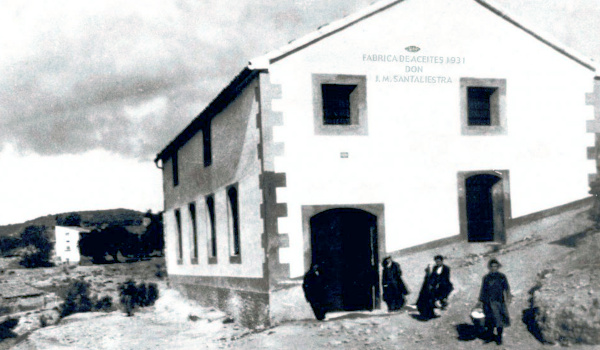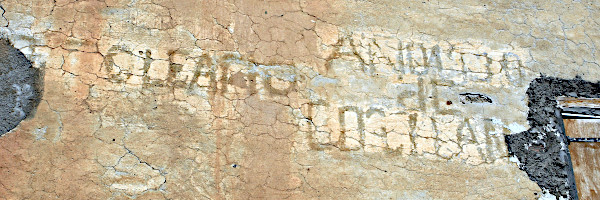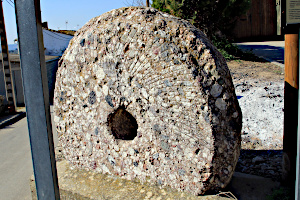The building has been renovated (compare 1 and 2).
The slope of the roof has changed. The shape of the windows is different and on the upper floor there are now three windows with none at the same place
as the two original ones. We couldn't look inside, but I doubt whether anything of the original furnishings has been preserved.
This site is the birthplace of today's Ecostean.
According to the company's website Ecostean stems from the original family busines ran by
Juan Manuel Santaliestra in 1931: the Fábrica de aceites shown in picture 2
(notice the text painted between the front windows).
It is remarkable, however, that the renovation brought an older text to the light (1, 3).
The ghost text reads as Año 1930 and then also oleario dE Costean.
It looks like there was already a molino oleario
, an oil mill, in business before the birth date given on the website.
Maybe Don Santaliestra took over the business from earlier operators?
In the provincial register of Huesca of the year 1865 we find a list for Costean enumerating all the people and what they own (land, houses, crops, …).
The Santaliestra family is mentioned, but among their numerous properties —they must have been quite wealthy— no mill is listed. There is another entry however, which does.
Entry Número 112 reads Cuerpo de propietarios: posee una casa en la calle baja
and also Un molino oleario
(4).
Accordingly there was already an oil mill which was owned jointly by several people.
This raises questions. Is this the same mill and did Santaliestra take it over? Or did he start his own mill? In addition to the existing one or to replace it?
Some more digging is needed.

(4) Entry 112 of the provincial register of 1865.
Notice the small plate mounted on the wall above the entrance and visible
in both the old and the recent pictures. It is embossed with
Seguros AURORA Bilbao (5).
This insurance company was founded in 1900. Aurora remained independent until 1977 when it merged with La Polar, also from Bilbao and founded in 1901, to form
AURORA POLAR, later on acquired by AXA.
We have seen Aurora also in the mill of Villalangua.
At the entrance of the village an old mill stone can be found (6). It is a puddingstone
dressed with curved furrows at the skirt. The stone may come from the old mill (7) situated next to the oil mill.
This old mill consists of a building with a walled front garden. We couldn't enter but looking over the, rather tall, wall we
could see some equipment with a ribbon wheel. Unfortunately, we could not get a good enough overview to know whether it was really a mill.








